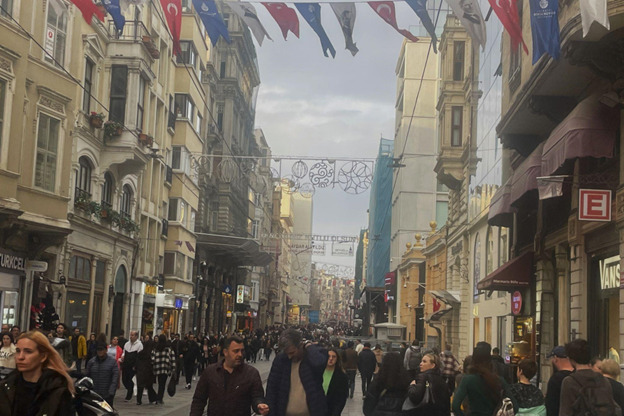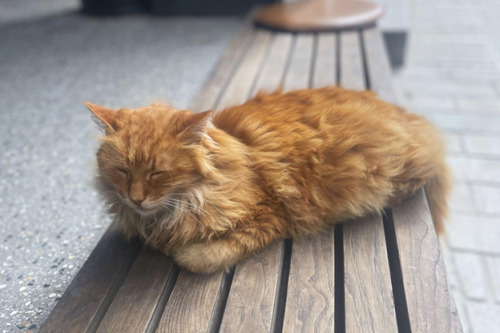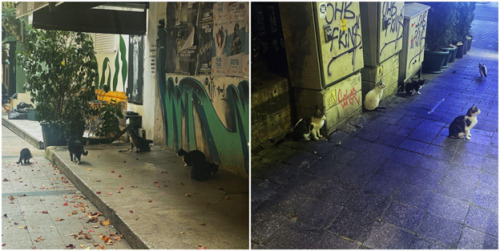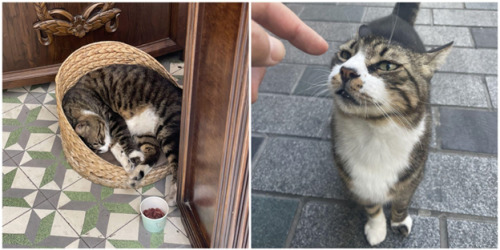
Walking İstiklal Caddesi, where ANAMED’s principal facilities are located, is frequently an overwhelming experience. I remember arriving in Istanbul for the first time in September and wandering İstiklal in wonder, searching for a fan to save me from the last wave of summer heat. I wondered if I would be able to make a home somewhere among the intersecting streams of people, steep alleyways, waving flags, glimmering shop signs, smells of dozens of different cuisines, and the historical tram stubbornly bulldozing its way through the crowds.
With time, of course, İstiklal became an easier experience to navigate. Through generational knowledge passed on from other ANAMED fellows, I was introduced to a sprawl of beloved restaurants, who fed us delicious meals on the busiest of workdays. I made ventures myself. And previously disjointed side streets became entryways into experiences and conversations—with a tailor, who worked miracles for my jacket just in time for the winter rains; an owner of a stationary store, who was extra patient with my Turkish. I started to appreciate how İstiklal changed at different times of the day. I enjoyed the early walks, with the majority of shops just preparing to open, when the morning quiet allowed me to enjoy the street’s historic architecture. In the midst of evening crowds, the largest of AVMs and chain restaurants became unconscious pace setters, marking my place on the street.
Amidst all of that, I also met İstiklal’s cat population. Through my months at ANAMED, I encountered plump Instagram superstars, who enjoy human attention and supervise store entryways, mysterious lurkers vanishing into the midnight streets, as well as every cat in between. İstiklal’s feline abundance was no surprise in the famously cat-friendly city, but I became curious—looking for some personal inspiration—about how the cat, notorious for its love of quiet and personal space, navigates the busy street. As an archaeologist specializing in eastern Roman (Byzantine) cities and their relationship with the environment, I am trained to pick up on the organization of space—what are the materially visible and invisible “centers of gravity” or, as we call them, “activity areas,” for felines on İstiklal? How do cats use those spaces to manage their interactions with each other and human groups on the street?

Fig. 2. Fluffy Orange Cat: an İstiklal regular (Author)
My own presence on İstiklal is even more ephemeral than the cats’, limited to the nine months of the ANAMED fellowship. My work as a researcher dictates that I hover above the street with my laptop, perching myself in various libraries and cafes. The cats I meet, as well as the routines I notice, are inevitably different from those available to the people who work manual or service jobs, have different hours, or frequent other parts of the street. Nevertheless, I share some of my observations, categorizing cat activity areas into three categories: (i) walled-off green spaces, such as courtyards and gardens; (ii) abandoned structures; (iii) shopfronts and the street itself.
i. Courtyards and Gardens
Cats, contrary to their sometimes aloof reputation, are a social species in need of companionship. If not socialized to interact with humans from a young age, cats will be mistrustful and will prefer the company of other cats exclusively, forming feral cat colonies. Many cats living on İstiklal, in my experience, are feral or semi-feral: they recognize humans as a source of food but not as a source of affection or safety. I speculate that this happens because there aren’t many spaces available for a calm human-cat interaction, where felines aren’t overwhelmed by the speed and stimuli of the street.
While İstiklal itself lacks calm, green spaces available to the public, multiple institutions facing it, such as Galatasaray Lisesi or the Swedish Consulate, have fenced-off gardens, which are easily permeable by cats. Felines have caretakers within those institutions, who provide them with dry houses and access to food. Similarly, cats themselves make the best of their fluid situation, frequently hopping the fence around dinner time, scavenging around the nearby busy restaurants for better treats, and then tracking back when human attention gets too intense. In the mornings, the cats feel the most confident, walking through the empty streets, picking through left-over trash, and waiting for the other caretakers to bring them human food leftovers.

Fig. 3. Galatasaray Lisesi/Urban Cafe colony in the morning and in the evening (Author)
I made a special case of observing a cat colony which lives on the grounds of Galatasaray Lisesi and frequently ventures out for late-night or early-morning snacks in the area next to Urban Cafe (a frequent ANAMED haunt). I found it curious that cats do not retreat deep into the grounds but frequently human-watch, sitting on the fence. If the cat is sitting on the side of the fence further from the street, it is less interested in contact and might hiss if it is approached carelessly. If a cat is on the side of the fence closer to the street, it might accept a polite scratch between the eyes in exchange for a treat. Try it yourself!
ii. Abandoned Structures
Not all cats choose to stay with their colonies. Some of them don’t get along, while others start exploring and find better communities and food sources in other parts of the street. Male cats, if not neutered, will frequently fight for territory and venture out to other neighborhoods, migrating farther. Female cats, if also not neutered, will sometimes withdraw from the social life of the colony in order to give birth to their kittens in a safe and secluded space.
I first locked eyes with the Fluffy Black Cat at 3:00 am, when I opened my window for some fresh night air, and she was picking through the remains of someone’s dinner in a styrofoam box lying on the ground. I don’t think either of us was prepared to share this moment with the other, so we both quickly retreated to our respective realms. I then started seeing Fluffy Black Cat in the mornings in front of an abandoned office structure right across from ANAMED. I was impressed by how skillfully she tore holes in the trash bags just as they were about to be picked up by the garbage truck, even as there were generous amounts of cat food made available next to the shopfronts nearby.

Fig. 4. Alleyway outside of my window; Abandoned structure, home to the Fluffy Black Kittens (Author)
Soon, the cat’s solitary presence became clearer—peeking from the second floor of the abandoned structure, there were Fluffy Black Kittens! Nearly perfect little voids with still-blue eyes, they were curiously gazing upon İstiklal’s crowds, attracting attention and camera clicks from passersby. I spent some time thinking about the kittens and their mom—what were they seeing? And how would the world look to you, if you were born in such a place? Fluffy Black Cat obviously did not trust any human presence and was both creative and desperate to find such a place to nest. How will those behaviors be passed on to her kittens?
iii. Shopfronts and the Street
These are the cats you know. They are the charming kebab thieves who will steal your warmed-up seat in a coffee shop. They will walk into a store meowing like they own the place and likely have multiple care-takers, who have food and warm beds ready for them. These cats are fully socialized to share spaces with humans and can calmly nap through the sounds and smells of İstiklal, as well as dozens of hands reaching down to give them a pet through the day. Sometimes I envy their social stamina.
Social cats frequently anchor themselves to a section of the street, where they have a series of shop fronts and restaurants that they frequent, zig-zagging between meals and naps in the sun. You might recognize the Fluffy Orange Cat, if you are ever in the area around EspressoLab Tünel, or, of course, Osman—a true İstiklal institution. Osman has been on İstiklal longer than the directors of most Archaeological Institutes where I have worked, or even the storefronts where he frequents. If you are lucky, you can catch him napping in the basket at Galleria Vitavien or welcoming customers at the nearby pharmacy.

Fig. 5. Osman: Napping and Demanding Snacks (Author)
Very few cats on İstiklal can boast the sense of security and safety which Osman has. And, as an itinerant archaeologist, I cannot offer complex solutions (or save all the kittens). But I hope that practices of closer looking—be it observing feral cats or writing a PhD dissertation—can open new perspectives on familiar interactions and problems. And when arriving on a new street, I always start with a careful “hello.”

